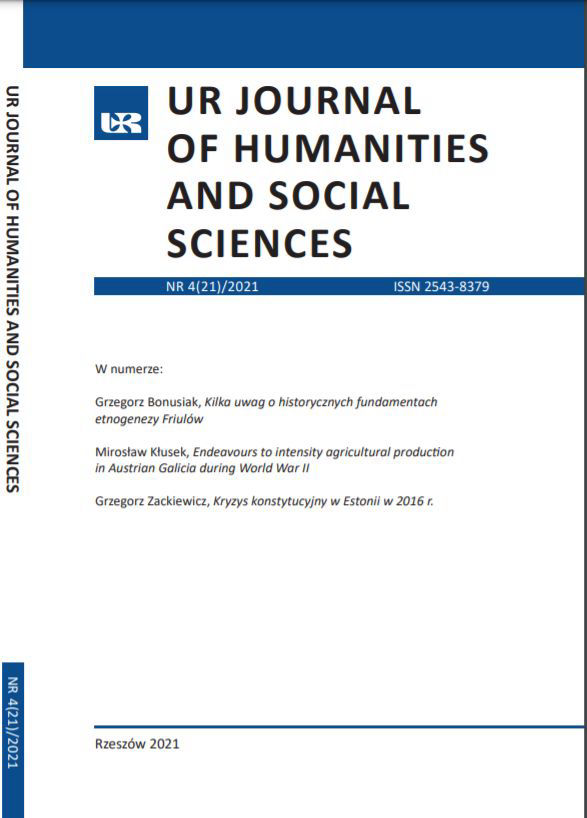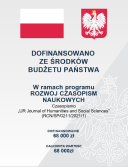Próby intensyfikacji produkcji rolniczej w Galicji austriackiej podczas II wojny światowej
DOI:
https://doi.org/10.15584/johass.2021.4.2Słowa kluczowe:
Galicja austriacka, II wojna światowa, rolnictwo, produkcja rolnicza, kontyngenty rolneAbstrakt
Najważniejszymi czynnikami wpływającymi negatywnie na efektywność produkcji rolniczej w Galicji austriackiej była niekorzystna struktura agrarna i struktura użytkowania gruntów oraz brak modernizacji procesu produkcji płodów rolnych. Sytuacja ta powodowała, że w Galicji austriackiej dominowało rolnictwo o ekstensywnym charakterze i bardzo niskiej wydajności. Po zajęciu prze Rzeszę Galicji Zachodniej w 1939 r., a w 1941 r. Galicji Wschodniej Niemcy za jeden z głównych celów uznali maksymalne zintensyfikowanie produkcji rolniczej tego obszaru. Zamierzano to osiągnąć poprzez: poprawę mechanizacji produkcji rolniczej oraz przetwórstwa rolnego, wzrost nawożenia nawozami sztucznymi, intensyfikację chemizacji upraw roślinnych, intensyfikację melioracji gruntów rolnych, restrukturyzację użytków rolnych, dokształcanie rolników, wprowadzenie i upowszechnienie bardziej wydajnych gatunków i odmian zbóż, roślin okopowych, bydła rogatego i trzody chlewnej, komasację gospodarstw. Działania niemieckie podczas II wojny światowej na ziemiach Galicji austriackiej zmierzające do zintensyfikowania produkcji rolniczej miały przede wszystkim służyć zaopatrywaniu Wehrmachtu oraz Niemiec w żywność, a w dłuższej perspektywie jak najlepszemu przygotowaniu tych terenów pod kolonizację niemiecką, która miała nastąpić po zwycięskim zakończeniu wojny przez Niemców.
Downloads
Pobrania
Opublikowane
Jak cytować
Numer
Dział
Licencja
Prawa autorskie (c) 2021 Wydawnictwo Uniwersytetu Rzeszowskiego

Utwór dostępny jest na licencji Creative Commons Uznanie autorstwa – Użycie niekomercyjne 4.0 Międzynarodowe.



